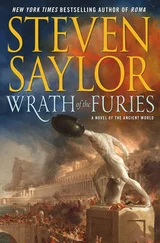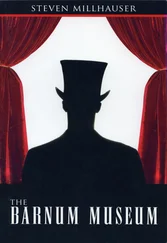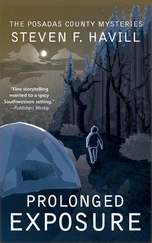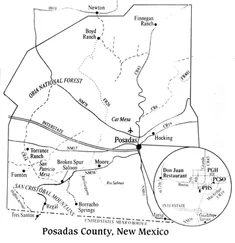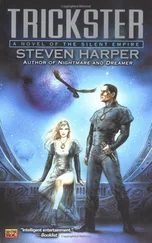Steven Dubner - Freakonomics
Здесь есть возможность читать онлайн «Steven Dubner - Freakonomics» весь текст электронной книги совершенно бесплатно (целиком полную версию без сокращений). В некоторых случаях можно слушать аудио, скачать через торрент в формате fb2 и присутствует краткое содержание. Жанр: Старинная литература, на русском языке. Описание произведения, (предисловие) а так же отзывы посетителей доступны на портале библиотеки ЛибКат.
- Название:Freakonomics
- Автор:
- Жанр:
- Год:неизвестен
- ISBN:нет данных
- Рейтинг книги:3 / 5. Голосов: 1
-
Избранное:Добавить в избранное
- Отзывы:
-
Ваша оценка:
- 60
- 1
- 2
- 3
- 4
- 5
Freakonomics: краткое содержание, описание и аннотация
Предлагаем к чтению аннотацию, описание, краткое содержание или предисловие (зависит от того, что написал сам автор книги «Freakonomics»). Если вы не нашли необходимую информацию о книге — напишите в комментариях, мы постараемся отыскать её.
Freakonomics — читать онлайн бесплатно полную книгу (весь текст) целиком
Ниже представлен текст книги, разбитый по страницам. Система сохранения места последней прочитанной страницы, позволяет с удобством читать онлайн бесплатно книгу «Freakonomics», без необходимости каждый раз заново искать на чём Вы остановились. Поставьте закладку, и сможете в любой момент перейти на страницу, на которой закончили чтение.
Интервал:
Закладка:
It is extremely unlikely, therefore, that the death penalty, as currently practiced in the United States, exerts any real influence on crime rates. Even many of its onetime supporters have come to this conclusion. “I feel morally and intellectually obligated simply to concede that the death penalty experiment has failed,” said U.S. Supreme Court Justice Harry A. Blackmun in 1994, nearly twenty years after he had voted for its reinstatement. “I no longer shall tinker with the machinery of death.”
So it wasn’t capital punishment that drove crime down, nor was it the booming economy. But higher rates of imprisonment did have a lot to do with it. All those criminals didn’t march into jail by themselves, of course. Someone had to investigate the crime, catch the bad guy, and put together the case that would get him convicted. Which naturally leads to a related pair of crime-drop explanations:
• Innovative policing strategies
• Increased number of police
Let’s address the second one first. The number of police officers per capita in the United States rose about 14 percent during the 1990s. Does merely increasing the number of police, however, reduce crime? The answer would seem obvious—
yes—but proving that answer isn’t so easy. That’s because when crime is rising, people clamor for protection, and invariably more money is found for cops. So if you just look at raw correlations between police and crime, you will find that when there are more police, there tends to be more crime. That doesn’t mean, of course, that the police are causing the crime, just as it doesn’t mean, as some criminologists have argued, that crime will fall if criminals are released from prison.
To show causality, we need a scenario in which more police are hired for reasons completely unrelated to rising crime. If, for instance, police were randomly sprinkled in some cities and not in others, we could look to see whether crime declines in the cities where the police happen to land.
As it turns out, that exact scenario is often created by vote-hungry politicians. In the months leading up to Election Day, incumbent mayors routinely try to lock up the law-and-order vote by hiring more police—even when the crime rate is standing still. So by comparing the crime rate in one set of cities that have recently had an election (and which therefore hired extra police) with another set of cities that had no election (and therefore no extra police), it’s possible to tease out the effect of the extra police on crime. The answer: yes indeed, additional police substantially lower the crime rate.
Again, it may help to look backward and see why crime had risen so much in the first place. From 1960 to 1985, the number of police officers fell more than 50
percent relative to the number of crimes. In some cases, hiring additional police was considered a violation of the era’s liberal aesthetic; in others, it was simply considered too expensive. This 50 percent decline in police translated into a roughly equal decline in the probability that a given criminal would be caught.
Coupled with the above-cited leniency in the other half of the criminal justice system, the courtrooms, this decrease in policing created a strong positive incentive for criminals.
By the 1990s, philosophies—and necessities—had changed. The policing trend was put in reverse, with wide-scale hiring in cities across the country. Not only did all those police act as a deterrent, but they also provided the manpower to imprison criminals who might have otherwise gone uncaught. The hiring of additional police accounted for roughly 10 percent of the 1990s crime drop.
But it wasn’t only the number of police that changed in the 1990s; consider the most commonly cited crime-drop explanation of all: innovative policing strategies.
There was perhaps no more attractive theory than the belief that smart policing stops crime. It offered a set of bona fide heroes rather than simply a dearth of villains. This theory rapidly became an article of faith because it appealed to the factors that, according to John Kenneth Galbraith, most contribute to the formation of conventional wisdom: the ease with which an idea may be understood and the degree to which it affects our personal well-being.
The story played out most dramatically in New York City, where newly elected mayor Rudolph Giuliani and his handpicked police commissioner, William Bratton, vowed to fix the city’s desperate crime situation. Bratton took a novel approach to policing. He ushered the NYPD into what one senior police official later called “our Athenian period,” in which new ideas were given weight over calcified practices. Instead of coddling his precinct commanders, Bratton demanded accountability. Instead of relying solely on old-fashioned cop know-how, he introduced technological solutions like CompStat, a computerized method of addressing crime hot spots.
The most compelling new idea that Bratton brought to life stemmed from the broken window theory, which was conceived by the criminologists James Q.
Wilson and George Kelling. The broken window theory argues that minor nuisances, if left unchecked, turn into major nuisances: that is, if someone breaks a window and sees it isn’t fixed immediately, he gets the signal that it’s all right to break the rest of the windows and maybe set the building afire too.
So with murder raging all around, Bill Bratton’s cops began to police the sort of deeds that used to go unpoliced: jumping a subway turnstile, panhandling too aggressively, urinating in the streets, swabbing a filthy squeegee across a car’s windshield unless the driver made an appropriate “donation.”
Most New Yorkers loved this crackdown on its own merit. But they particularly loved the idea, as stoutly preached by Bratton and Giuliani, that choking off these small crimes was like choking off the criminal element’s oxygen supply.
Today’s turnstile jumper might easily be wanted for yesterday’s murder. That junkie peeing in an alley might have been on his way to a robbery.
As violent crime began to fall dramatically, New Yorkers were more than happy to heap laurels on their operatic, Brooklyn-bred mayor and his hatchet-faced police chief with the big Boston accent. But the two strong-willed men weren’t very good at sharing the glory. Soon after the city’s crime turnaround landed Bratton—and not Giuliani—on the cover of Time, Bratton was pushed to resign.
He had been police commissioner for just twenty-seven months.
New York City was a clear innovator in police strategies during the 1990s crime drop, and it also enjoyed the greatest decline in crime of any large American city.
Homicide rates fell from 30.7 per 100,000 people in 1990 to 8.4 per 100,000 people in 2000, a change of 73.6 percent. But a careful analysis of the facts shows that the innovative policing strategies probably had little effect on this huge decline.
First, the drop in crime in New York began in 1990. By the end of 1993, the rate of property crime and violent crime, including homicides, had already fallen nearly 20 percent. Rudolph Giuliani, however, did not become mayor—and install Bratton—until early 1994. Crime was well on its way down before either man arrived. And it would continue to fall long after Bratton was bumped from office.
Second, the new police strategies were accompanied by a much more significant change within the police force: a hiring binge. Between 1991 and 2001, the NYPD
grew by 45 percent, more than three times the national average. As argued above, an increase in the number of police, regardless of new strategies, has been proven to reduce crime. By a conservative calculation, this huge expansion of New York’s police force would be expected to reduce crime in New York by 18
Читать дальшеИнтервал:
Закладка:
Похожие книги на «Freakonomics»
Представляем Вашему вниманию похожие книги на «Freakonomics» списком для выбора. Мы отобрали схожую по названию и смыслу литературу в надежде предоставить читателям больше вариантов отыскать новые, интересные, ещё непрочитанные произведения.
Обсуждение, отзывы о книге «Freakonomics» и просто собственные мнения читателей. Оставьте ваши комментарии, напишите, что Вы думаете о произведении, его смысле или главных героях. Укажите что конкретно понравилось, а что нет, и почему Вы так считаете.

